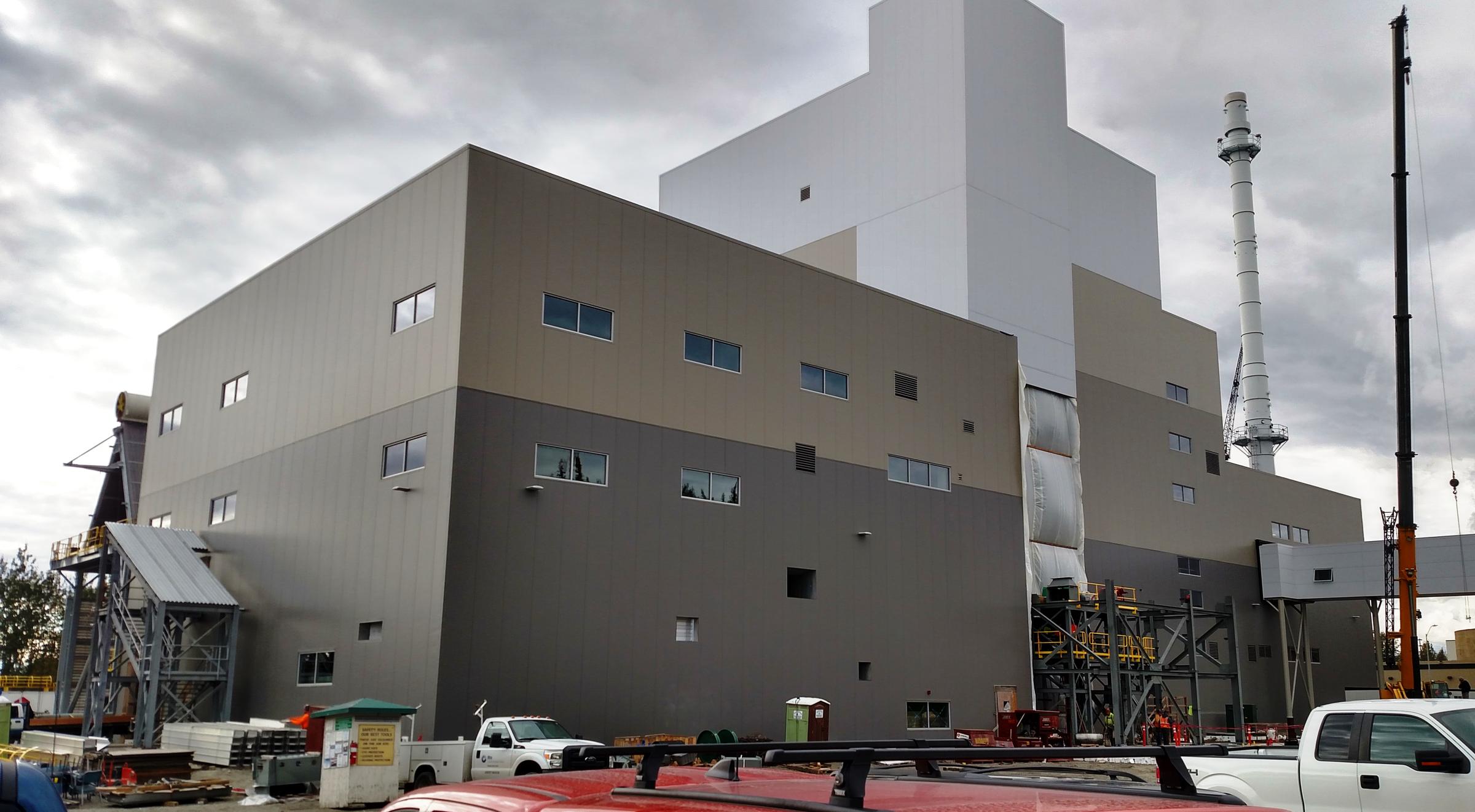
The University of Alaska Fairbanks is building a heat and power plant to replace the old facility that went into service in 1964.
The new $245 million powerplant, scheduled to come online next year, will feature updated technology that’ll reduce most pollutants – but it will continue to emit greenhouse gases blamed for warming the planet.
Many on campus say that conflicts with UAF’s leadership in Arctic climate-change research.
The work on university’s 17-megawatt combined heat and power plant is about halfway done.
when the state-of-the-art facility goes online around December of next year, Senior Project Manager Mike Ruckhaus said it’ll be among the most environmentally friendly coal-fired power plants in the country.
“From an environmental standpoint, this meets all the current regulations and criteria,” Ruckhaus said during a tour last week around the construction site.
That includes regulations related to the tiny particles called PM 2.5, produced by combustion, which can foul Fairbanks’s air during winter inversions.
“It’s about as clean as you can get on PM 2.5,” Ruckhaus said.
But the plant will emit nearly 132,000 tons of carbon dioxide equivalent annually, about 3 percent less than the old facility, but still roughly the amount of CO2 generated by 26,000 cars annually.
Coal-fired power plants are the main source of atmospheric CO2.
The new power plant still bothers some university researchers who study climate change and its impact on the Arctic even though it’s a done deal and construction is well under way.
“From a scientific perspective, I understand the consequences of burning fossil fuels – and particularly for people who live in the Arctic and the subarctic,” said Scott Rupp, a professor of forestry and deputy director of UAF’s International Arctic Research Center.
He said when UAF officials were debating a decade ago over what kind of power plant to build to replace the old one, he and others favored renewable-energy options like hydro and solar.
“It’s disappointing,” Rupp said in a recent interview. “My personal preference would be to have been able to continue to be a showcase of not only great science on climate change but be able to put some of our innovation into how we power the Arctic university that we are.”
Rupp and others acknowledge that locally mined coal, from the Usibelli operation in Healy, was the only practical option for fueling power plants in Fairbanks.
“We still don’t have natural gas in town, so obviously you can’t rely on that,” University Regent John Davies said.
Davies favored that type of fuel for the new power plant.
And because the need to replace the old facility was urgent, Davies added, “you have to at some point have a plan and move forward on it.”
Davies said UAF’s old plant was well past its design life and that university officials had to make a decision.
“We had replace the power plant because it was 50 years old and it was failing,” Davies said. “It could’ve been a major catastrophe if that plant had gone down in the middle of winter.”
Davies is a longtime advocate for clean air and energy efficiency, and he said he still feels conflicted over the university’s decision to build another coal-fired power plant.
“There certainly remains the irony that this is the only coal-fired power plant in the nation that’s being built – and we’re also the leading group on understanding climate change and the need to reduce the emissions of fossil fuels to reduce the amount of greenhouse warming,” Davies said.
Davies referred to reports from two media outlets, ClimateWire and Alaska Dispatch News, that pointed out the UAF power plant is the only one under construction in the United States.
Davies said he hopes university officials will be able to choose natural gas, or renewable energy, when UAF replaces the power plant again a half-century from now.
